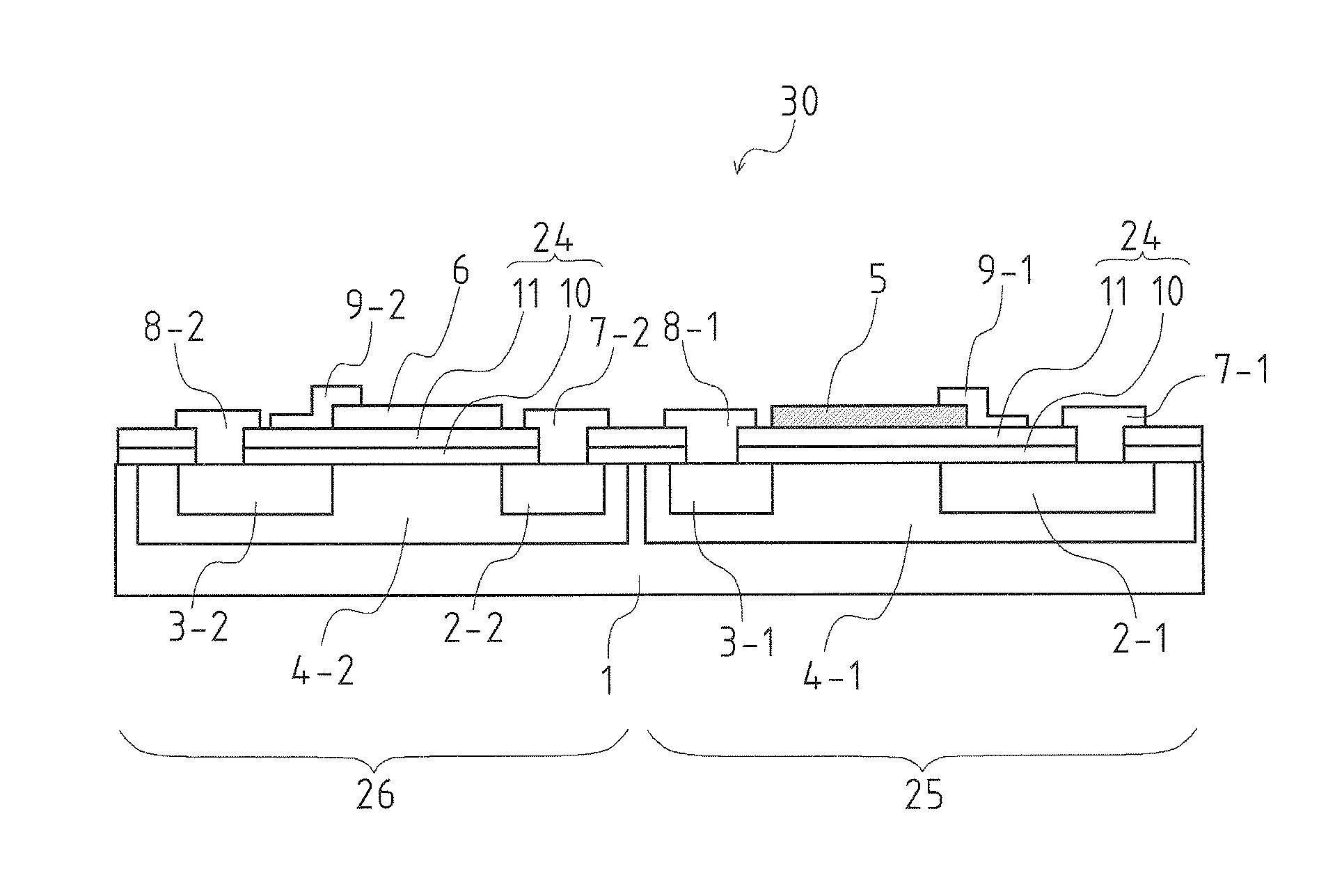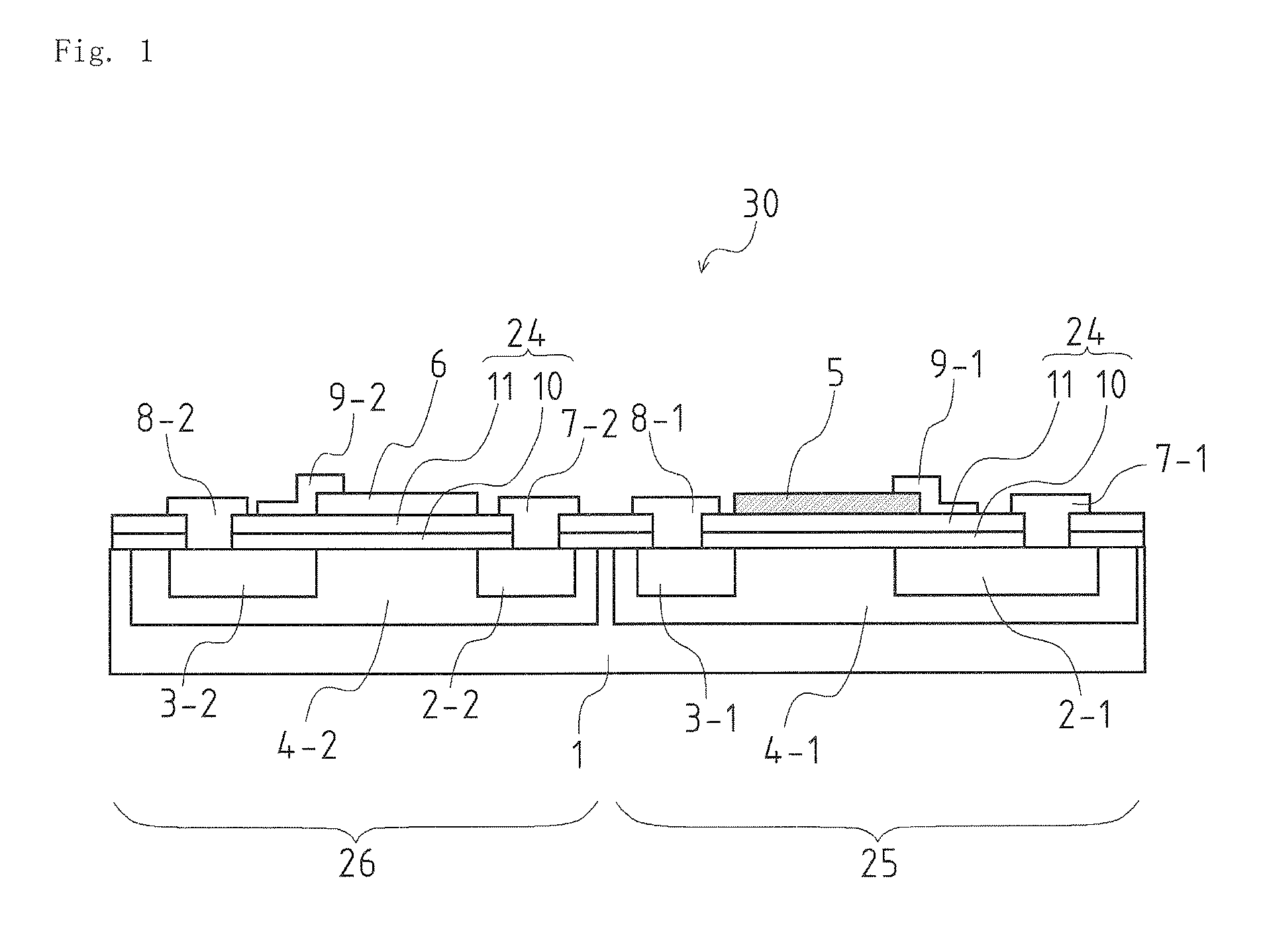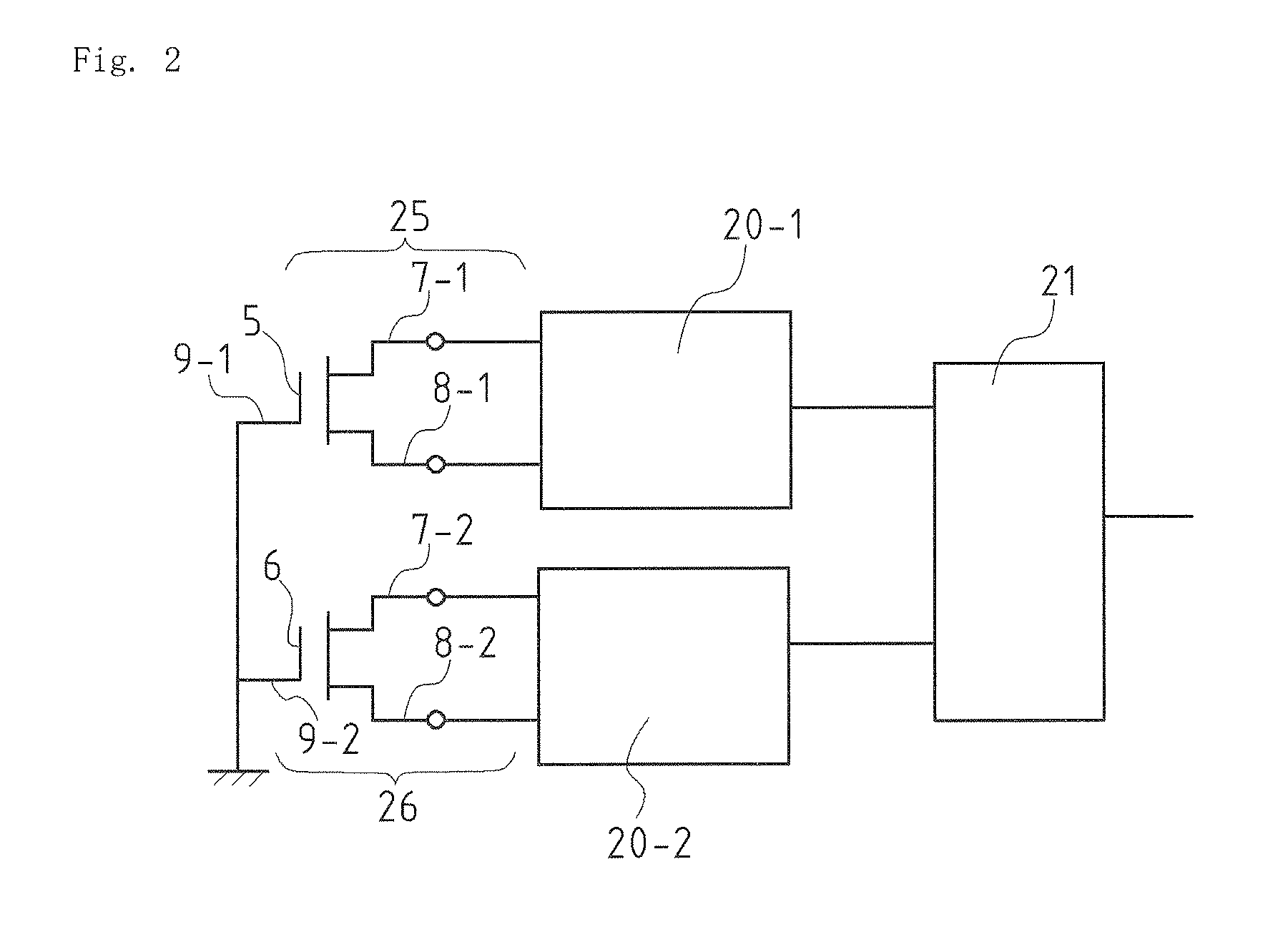Gas Sensor
a technology of gas sensor and sensor, applied in the field of gas sensor, can solve the problems of long-term drift of sensor output, difficult to determine whether a change in sensor output is a response, and difficult to determine whether a gas sensor is not responding, so as to eliminate the change in output, stabilize the reaction, and respond differently.
- Summary
- Abstract
- Description
- Claims
- Application Information
AI Technical Summary
Benefits of technology
Problems solved by technology
Method used
Image
Examples
embodiment 1
[0053]FIG. 1 is a schematic cross-sectional view of a gas sensor according to an embodiment of the present invention, illustrating a basic structure of the gas sensor including two field-effect transistors, A gas sensor 30 illustrated in FIG. 1 is a field-effect gas sensor in which two field-effect transistors using mutually different metal materials as gate electrodes are integrated on one Si substrate 1. That is, the gas sensor 30 includes two n-type channel field-effect transistors provided on the Si substrate 1.
[0054]A catalytic metal gate field-effect transistor 25 (hereinafter referred to as catalytic metal gate transistor), which is one of the two field-effect transistors, includes a Pt gate electrode 5 formed as a first gate electrode. Using Pt (platinum), which is an example of catalytic metal, as a gate electrode material of the first gate electrode, the catalytic metal gate transistor 25 functions as a gas sensor to respond to hydrogen. Hydrogen, when exposed to Pt (plati...
embodiment 2
[0064]FIG. 5 shows an alternating-current source 23 serving as voltage applying means added to the gas measuring circuit in FIG. 3. The alternating-current source 23 applies an alternating-current voltage ΔAC commonly to the two field-effect transistors, namely, the catalytic metal gate transistor 25 and the non-catalytic metal gate transistor 26. This signal, i.e., the alternating-current voltage ΔAC, and alternating-current components ΔAC1 and ΔAC2 of outputs of the two field-effect transistors have the relationship ΔAC1=ΔAC2=ΔAC during normal operation of the two field-effect transistors. Therefore, the alternating-current voltage signal does not exist in the output difference of the differential amplifier 21. However, if either of the two field-effect transistors breaks down, the broken field-effect transistor shows no alternating-current voltage signal in its output or shows a different level of alternating-current voltage signal to result in ΔAC1≠ΔAC2. The differential amplifi...
embodiment 3
[0070]FIG. 6 is a schematic view of the gas sensor 30 including the two field effect transistors according to an embodiment of the present invention, illustrating a basic structure of a sensor chip plane having a common ion conductive film formed on the gate electrodes. In order to couple the gas sensor 30 to an external measuring circuit (not shown), a drain electrode pad 27, a source electrode pad 28, and a gate wiring electrode pad 29 of the catalytic metal gate transistor 25, and a drain electrode pad 31, a source electrode pad 32, and a gate wiring electrode pad 33 of the non-catalytic metal gate transistor 26 are provided adjacent to the chip of the gas sensor 30. The Pt gate electrode 5 and the Ti gate electrode 6 is covered with a common ion conductive film 12. The common ion conductive film 12 in the present embodiment is a perfluoro-ion-exchange film having proton conductivity. The perfluoro-ion-exchange film having proton conductivity selectively allows proton ions to per...
PUM
 Login to View More
Login to View More Abstract
Description
Claims
Application Information
 Login to View More
Login to View More - R&D
- Intellectual Property
- Life Sciences
- Materials
- Tech Scout
- Unparalleled Data Quality
- Higher Quality Content
- 60% Fewer Hallucinations
Browse by: Latest US Patents, China's latest patents, Technical Efficacy Thesaurus, Application Domain, Technology Topic, Popular Technical Reports.
© 2025 PatSnap. All rights reserved.Legal|Privacy policy|Modern Slavery Act Transparency Statement|Sitemap|About US| Contact US: help@patsnap.com



